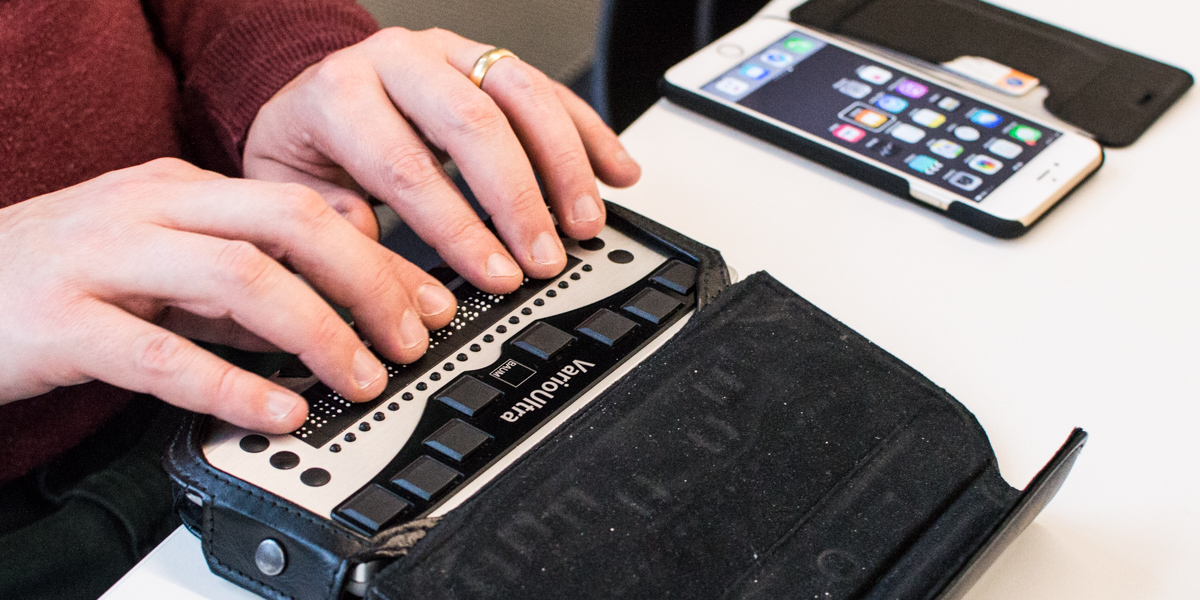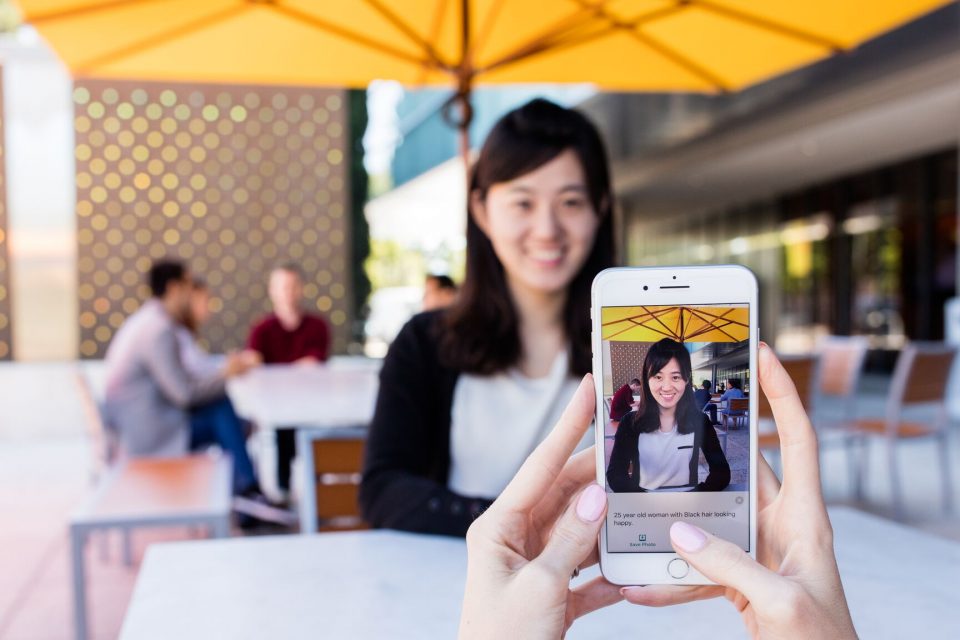Mobility Aids for Visually Impaired Users: Traveling the World with Confidence
Mobility Aids for Visually Impaired Users: Traveling the World with Confidence
Blog Article
Discover Ingenious Tools Created for the Visually Damaged
The growth of cutting-edge devices for the aesthetically impaired stands for a considerable advancement in access and freedom. Technologies such as wise glasses with AI abilities and mobile applications designed to give auditory descriptions are improving day-to-day experiences for customers. Additionally, wearable tools that use haptic feedback enhance environmental understanding, while modern-day Braille innovations use new means to involve with text. As these tools proceed to advance, their influence on the lives of those with visual impairments elevates important inquiries about the future of inclusivity and autonomy in different facets of life. What exists ahead in this technical landscape?
Smart Glasses for Navigation

Smart glasses made for navigating are transforming the method aesthetically damaged individuals communicate with their setting. These innovative tools make use of a combination of video camera technology, expert system, and auditory feedback to provide real-time details regarding surroundings. By employing barrier discovery systems, wise glasses can alert individuals to prospective risks, making it possible for more secure mobility in both acquainted and unfamiliar settings.
The combination of GPS innovation better boosts navigating capacities, enabling users to get auditory directions as they move. This hands-free method not only cultivates self-reliance however additionally equips aesthetically damaged people to navigate metropolitan landscapes with enhanced self-confidence. Furthermore, lots of wise glasses are equipped with attributes that identify sites and street signs, offering contextual information that improves the user experience.
In addition, the advancement of these gadgets is consistently progressing, with business working to improve the accuracy of object recognition and increase the variety of navigational features. As clever glasses come to be a lot more available and economical, they hold the prospective to substantially transform life for aesthetically impaired customers. Inevitably, these ingenious tools stand for a vital action toward inclusivity, offering enhanced movement and a higher feeling of freedom for people browsing the globe around them.

Mobile Application for Daily Living
How can mobile applications boost the day-to-days live of visually damaged individuals? Mobile apps are changing the method visually impaired customers navigate their environments, handle daily jobs, and accessibility info. These applications provide essential support through numerous performances, fostering freedom and boosting lifestyle.
Several ingenious mobile applications are designed particularly for day-to-day living. For circumstances, apps like Be My Eyes link aesthetically damaged individuals with sighted volunteers by means of video phone calls, allowing them to get real-time assistance with jobs such as checking out labels or navigating strange spaces. Seeing AI, created by Microsoft, utilizes artificial knowledge to define surroundings, reviewed message, and recognize items, properly transforming a smart device right into an effective device for day-to-day assistance.
Additionally, navigation apps customized for the aesthetically damaged, such as Aira and BlindSquare, supply audio-based instructions and ecological details, enabling individuals to traverse their surroundings safely and confidently. Beyond navigation and immediate support, mobile apps additionally sustain organization and task administration, with functions that assist users set pointers, produce order of business, and track appointments. In summary, mobile applications function as essential resources, equipping visually impaired individuals to lead more independent and satisfying lives.
Wearable Technologies for Assistance
Empowerment through technology is increasingly evident in the realm of wearable devices developed to assist visually damaged people. These ingenious tools integrate flawlessly right into day-to-day live, enhancing navigation and giving necessary comments to users. Clever glasses furnished with electronic cameras can acknowledge faces and read text aloud, enabling individuals to connect more with confidence in professional and social setups.
One more notable advancement is making use of haptic feedback systems in wearable tools. These systems use resonances or other responsive signals to convey details about the customer's environment, such as barriers or modifications in surface, boosting mobility and safety. Wearable modern technologies also consist of wristbands that connect to mobile phones, notifying customers to notifications with refined vibrations, therefore boosting connectivity without reliance on visual hints.
As these technologies remain to advance, they are not only enhancing freedom for visually impaired people however additionally promoting a better sense of incorporation in society. By connecting the space in between challenges dealt with in everyday living and the possibility for freedom, wearable technologies serve as crucial tools in the mission for equal rights and empowerment for those with aesthetic problems.
Sound Description Tools
Audio description devices play a critical role in enhancing availability for aesthetically damaged people, giving them with the capability to engage with visual media. Screen readers for the blind. These devices supply narrated summaries of crucial visual aspects in films, television shows, and live performances, making certain that customers can totally comprehend the context and emotions shared with visuals
Audio summary can be incorporated right into numerous systems, consisting of streaming solutions, movie theater screenings, and live cinema. Several preferred streaming solutions now include audio summary as an ease of access feature, allowing customers to pick it quickly. In enhancement to traditional media, specialized apps additionally exist, giving audio summaries for art events, museums, and other social occasions.
The efficiency of audio description pivots on the ability of the narrators, who have to share visual details succinctly without interfering with the initial audio. Developments in this field are additionally leading the way for more customized experiences, where users can readjust the level of detail and pacing according to their choices.
Braille Innovations and Tools
Braille advancements and tools have dramatically changed the means aesthetically damaged people engage with message and details. Modern innovations have actually brought about the growth of functional devices that improve literacy and self-reliance among individuals. Significantly, Braille display innovations have developed, enabling dynamic analysis experiences. These gadgets convert digital text into Braille, making it possible for customers to access a substantial selection of details on computers, tablets, and smartphones.
Furthermore, portable Braille notetakers integrate standard Braille input with modern capabilities, helping with note-taking, organizing, and paper editing on Mobility aids for visually impaired users the move. Screen readers for the blind. These compact gadgets often include text-to-speech capacities, connecting the void between Braille and acoustic details
In addition, ingenious Braille printers have actually emerged, permitting users to create Braille tags, documents, and educational products efficiently. This availability fosters higher participation in professional and academic atmospheres, eventually advertising inclusivity.
Additionally, research study right into clever Braille innovations remains to broaden. Gadgets that include artificial intelligence are being explored to supply real-time navigating assistance and contextual details, enhancing the user experience in diverse setups. On the whole, these developments show a dedication to encouraging aesthetically damaged people with modern technology, guaranteeing they can easily access and engage with the world around them.

Verdict
The advancement of innovative tools for the aesthetically impaired significantly enhances independence and quality of life. These innovations not just foster higher addition yet also promote autonomy in daily activities, eventually contributing to a much more easily accessible and fair society for visually impaired people.
As clever glasses end up being extra available and inexpensive, they hold the prospective to dramatically change day-to-day life for aesthetically impaired individuals. Mobile applications are changing the way visually damaged customers browse their settings, handle daily tasks, and access info. Applications like Be My Eyes attach aesthetically damaged users with sighted volunteers through video telephone calls, permitting them to get real-time support with tasks such as reviewing labels or browsing strange areas.Additionally, navigating apps tailored for the aesthetically impaired, such as Aira and BlindSquare, offer audio-based directions and ecological information, making it possible for individuals to traverse their surroundings securely and with confidence.The improvement of ingenious tools for the visually damaged dramatically improves independence and top quality of life.
Report this page